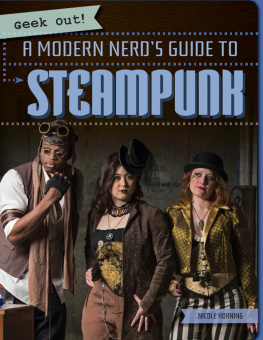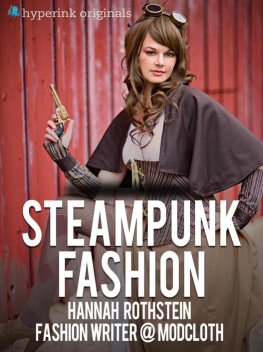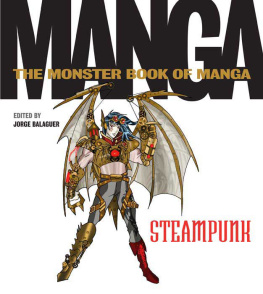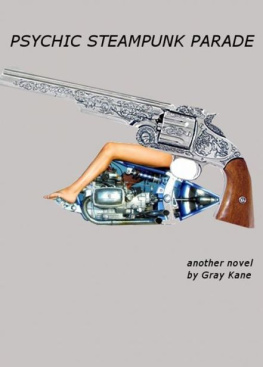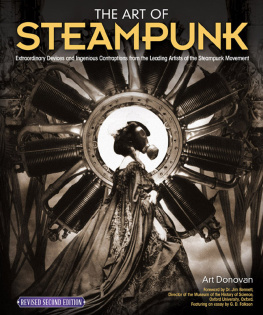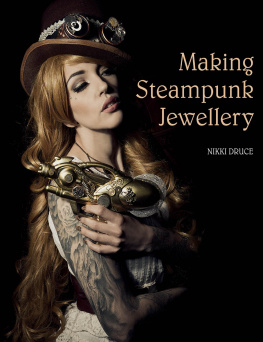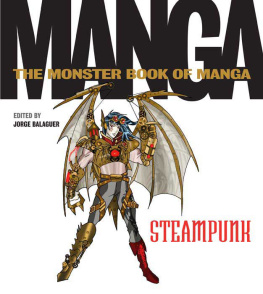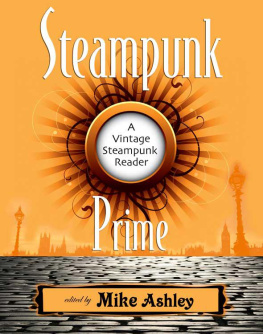STEAMPUNK
Learn How to Draw Amazing
Steampunk Figures!
By Jeffrey Stain
Part2
Copyright2015 Jeffrey Stain
All Rights Reserved
Copyright 2015 by Stain J.
All rights reserved. No part of this publication may be reproduced, distributed, or transmitted in any form or by any means, including photocopying, recording, or other electronic or mechanical methods, without the prior written permission of the author, except in the case of brief quotations embodied in critical reviews and certain other noncommercial uses permitted by copyright law.
Table of Contents
Disclaimer
While all attempts have been made to verify the information provided in this book, the author does assume any responsibility for errors, omissions, or contrary interpretations of the subject matter contained within. The information provided in this book is for educational and entertainment purposes only. The reader is responsible for his or her own actions and the author does not accept any responsibilities for any liabilities or damages, real or perceived, resulting from the use of this information.
The trademarks that are used are without any consent, and the publication of the trademark is without permission or backing by the trademark owner. All trademarks and brands within this book are for clarifying purposes only and are the owned by the owners themselves, not affiliated with this document.
Introduction
As an avid fan of Steampunk genre of drawing and animation, you might have some idea about what Steampunk is. But, it needs a deep interest in this genre and its history if you want to master drawing sketches and creating graphics of Steampunk. The first step to create graphics in any genre is to master its drawings manually first. Only then you can go a step further and create beautiful animations in it.
This book is written with regard to the amateur artists of Steampunk. The genre basically began from the Victorian era. Gradually it came to the mainstream during 1980s. We will talk about the history and origin of this genre in brief later in the first section of this book. The second section focuses on the drawing part and tutorials.
You might have read the first part of this book. STEAMPUNK - Learn How to Draw Amazing Steampunk Figures! is written as a sequel to its Part 1. The earlier Part-1 was written for absolute beginners. This book (Part 2) is slightly above the basic level. Still, if you have not gone through the first part, you will not face any difficulty in learning Steampunk figures from the tutorials of this book. It is written in a comprehensive manner so that all sorts of learners can learn drawing Steampunk sketches easily.
We highly recommend that you read the section 1 of the book initially and then move further. The brief introduction is given about the genre because it becomes easier to get your hands on any new genre if you are aware about its history and origin. Moreover, the chapter which explains the machine parts individually makes it absolutely easy for a non-technical person to incorporate the machine parts into the drawings.
Enjoy exploring this beautiful genre.
Section 1
Chapter 1
Steampunk figures: A Glimpse of the Ultimate and Happening Genre
The things we see all around us can limit our imagination sometimes. But, artists always crave for something new and exciting. This is a common dilemma that artists all over the world face. If you want to learn something retro and futuristic, Steampunk genre is absolutely made for you.
Many people have just heard the term Steampunk and seen a few pictures of the drawings. But, very few know what the term actually means and where did it originate from. Let us give you a brief introduction to this soul satisfying genre.
Imagine the modern day gadgets- computers, iPads, robotics, fixed line phones, etc. powered by the steam and set in the backdrop of 1800s. This is the crisp and short definition of Steampunk. It is inspired from the Victorian England era. The modern technology is re-imagined, created and realized in the perspective of Victorian era. Fashion, art and mechanics are created according to the point of view of earlier machinery that used to run on steam.
The genre came to the mainstream in 1980s. The term Steampunk was coined by K.W. Jeter. People who made this genre popular were William Gibson, author of the book, The Difference Engine and Bruce Sterling, the contributor of the book. From just being a hobby of some creative artists, Steampunk has entered the fields of fashion, music, lifestyle and engineering. The Steampunk projects challenge the artist to create something attractive out of the bits or bobs of machinery.
The brass fixtures, which seem junk to others, seem like a piece of art to the Steampunk artists. There is machinery all around us. The difference between a Steampunk artist and a layman is that the Steampunk creators see the machinery around them fit to be incorporated in their artwork. But, to a layman, it is just a machine made for utility.
For creating Steampunk, there is only one rule- there is no rule. You just have to create artwork out of whatever appeals to you. You do not have to understand the working of steam powered machines at all. Just look at its parts and practice drawing. Steampunk drawings are very much versatile in nature. You just need to have some passion for the genre and a lot of imagination to incorporate various bits and bobs of the gadgets into your drawings.
Chapter 2
Basic Steampunk Machines Parts
This chapter was also written in Part-1 of this book. It is important to read this chapter for those readers who have not read the previous version of this book. Let us remind you of a few mechanical parts.
There are several steam machine parts, which can be drawn easily, once you give in regular practice. We have listed a few machine parts that can be conveniently inserted in Steampunk drawings.
Shafts
A line shaft is used to transmit power from one source to another. There are thousands of shafts in millions of machinery in every industry. It is basically an elongated part. You can insert a shaft into your drawings wherever you feel the need.
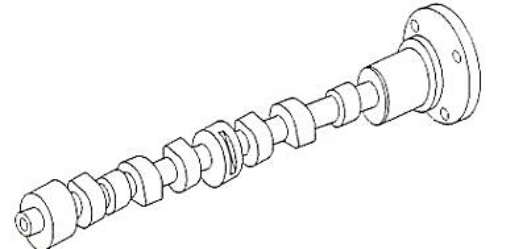
Bearings
A bearing is used to restrict the motion between two moving parts of a machine. It is a very interesting part to be used in Steampunk drawings. The circular design allows you to add a great look to the illustrations.
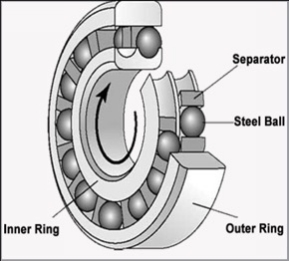
Gear
A gear is a toothed part of a machine, which is used to mesh with other gears to transmit torque. It is also very beautiful part to be inserted in Steampunk drawings. In the drawings that follow, you will see that we have used gears quite often.
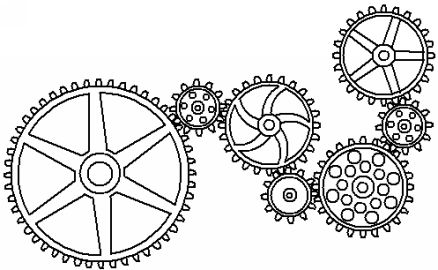
Gear Train
A gear train consists of a few gears that are mounted on a frame in such a way that the teeth of all the gears engage with each other perfectly.
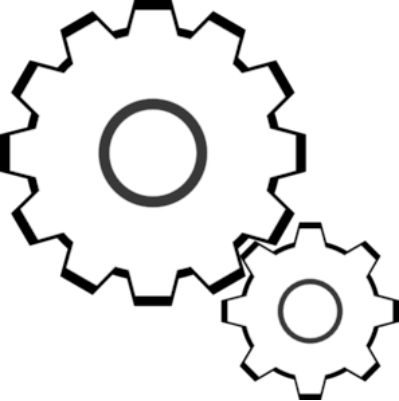
Rivets
A rivet is used to permanently fasten one thing to the other. It consists of a head and a tail. Some of them come with a + sign, which can be used in the central parts of some gears as well. The parallel circular drawings on the tail also add amazing features to the drawings. In your illustrations, wherever you feel emptiness, you can insert rivets. It will fulfill the gaps- permanently!
Next page


